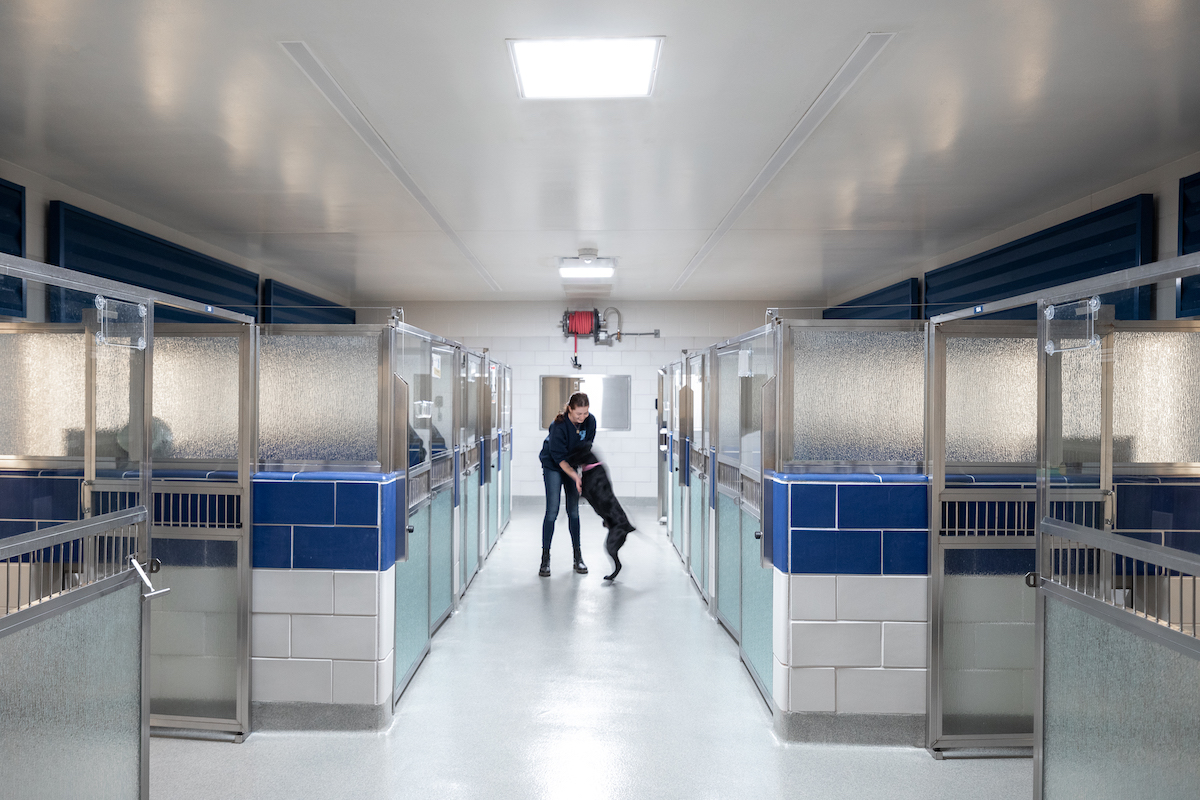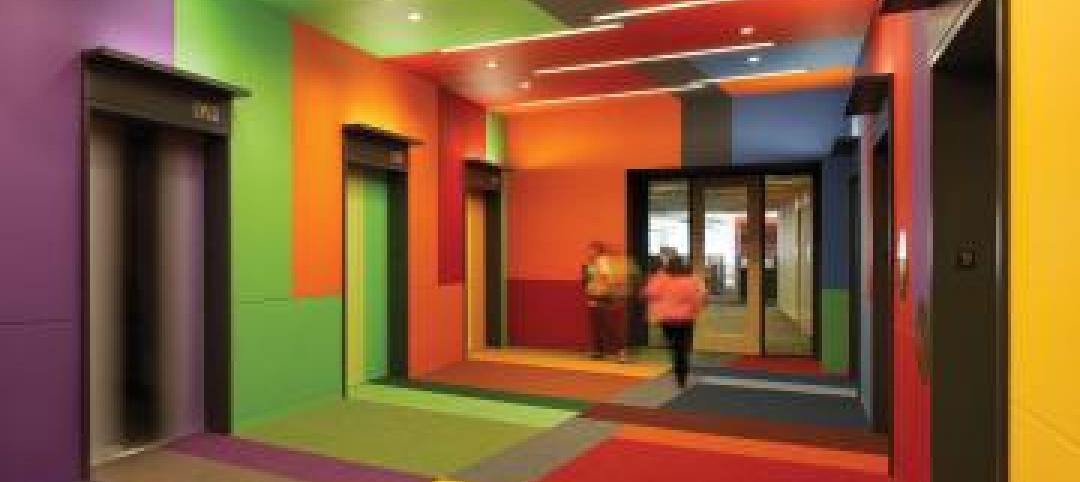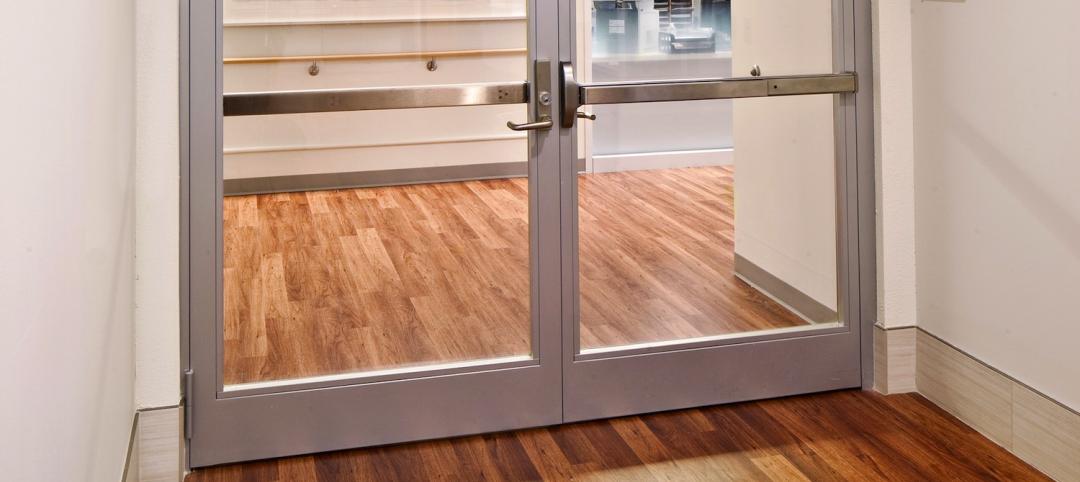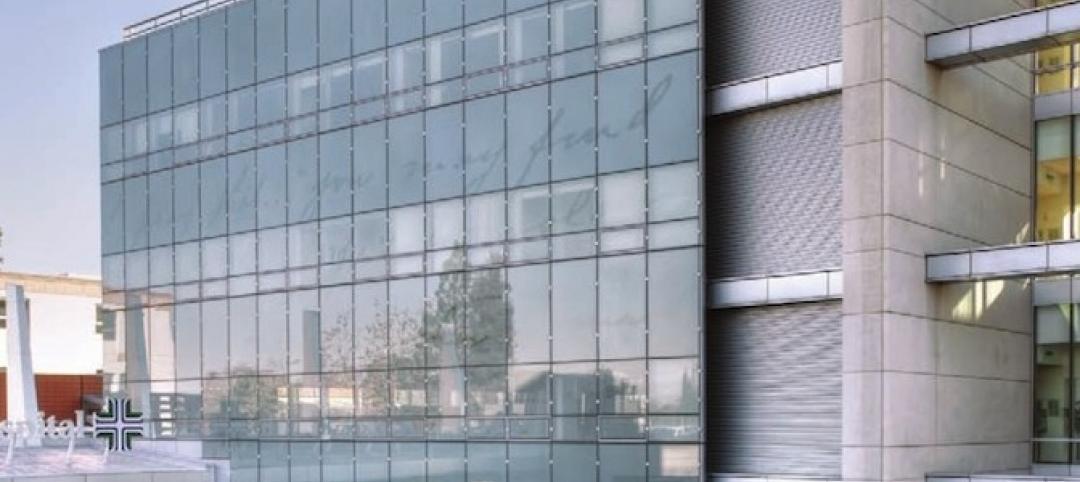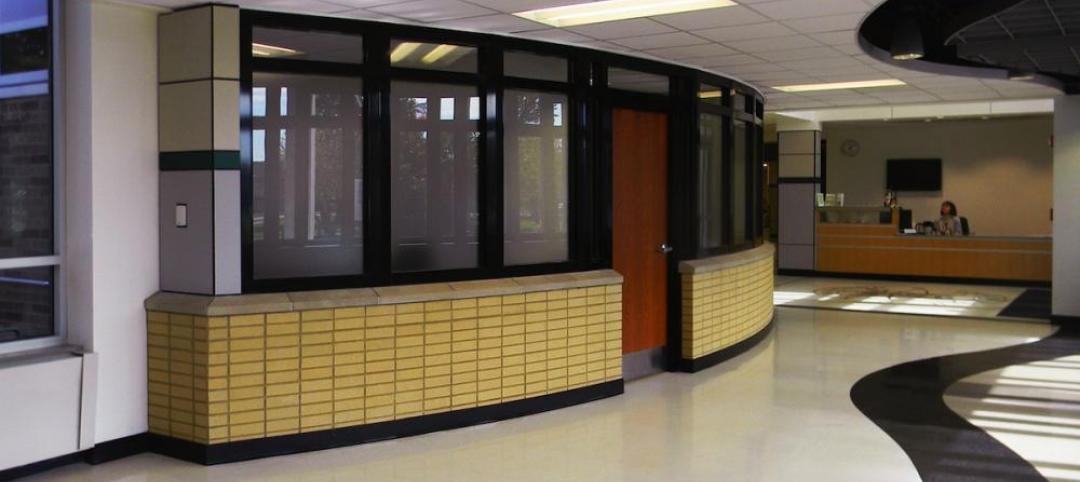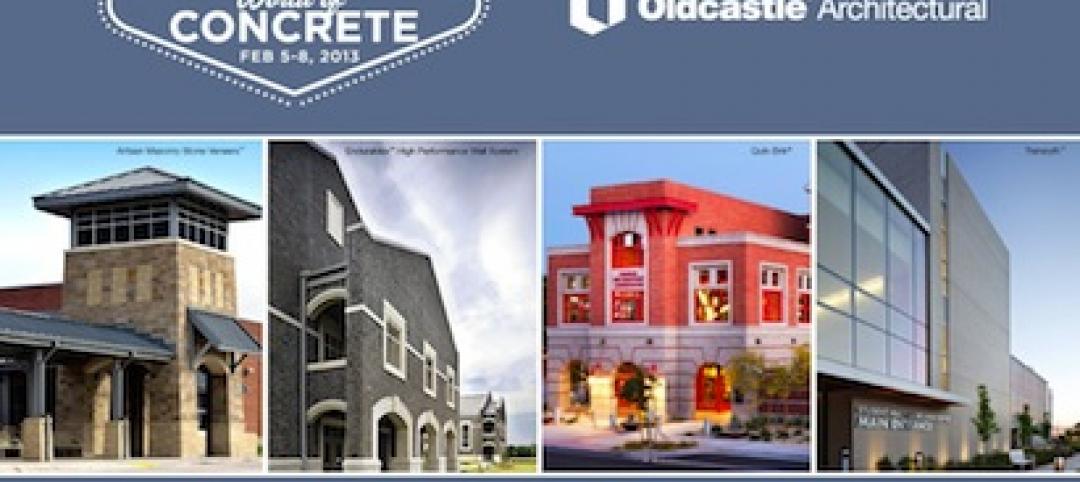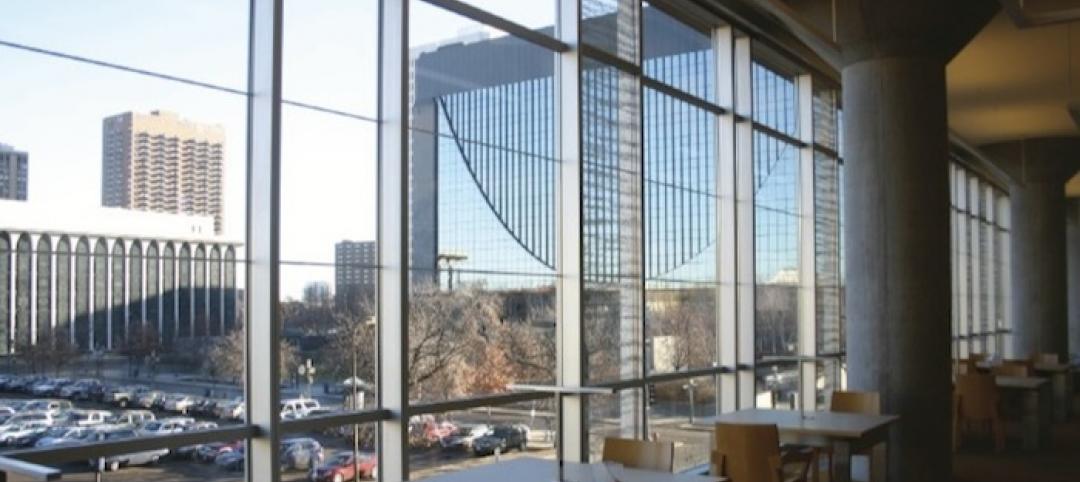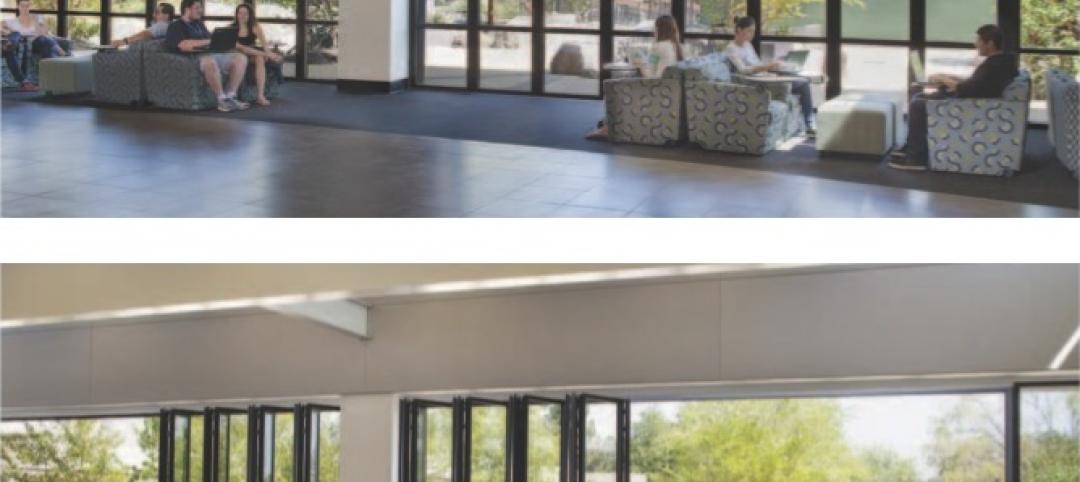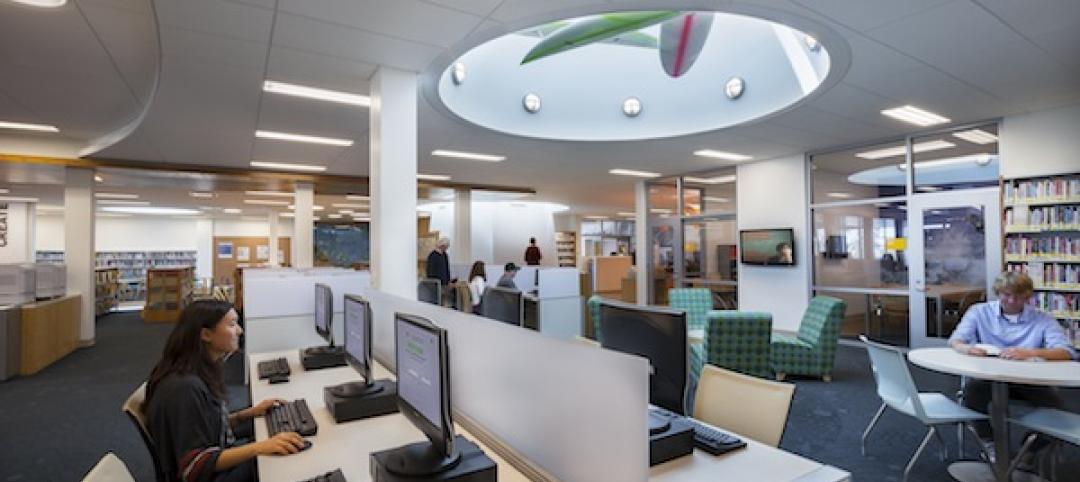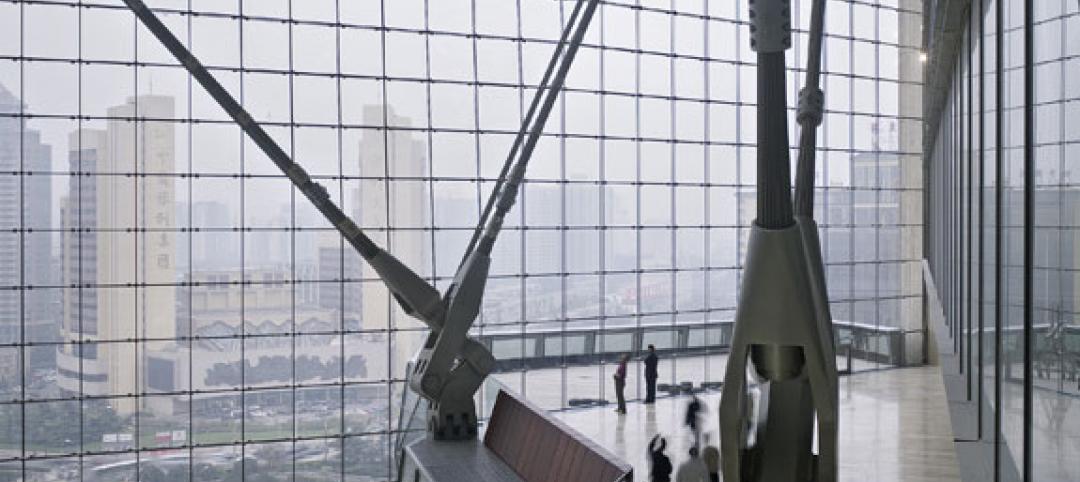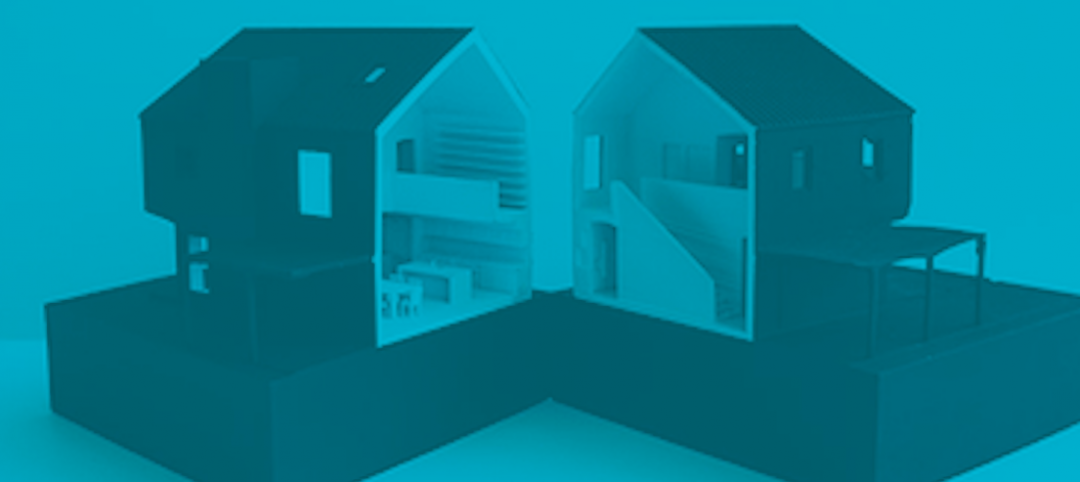The new 13,245-sf Grapevine (Texas) Animal Services Shelter and Adoption Center stands as a vital hub for the local community. Committed to promoting pet adoptions and ensuring the welfare of animals, the shelter plays a pivotal role in adoptions, humane law enforcement, and wildlife concerns.
The shelter's mission centers on fostering a nurturing environment conducive to successful pet adoptions, and the staff had specific ideas about how the new center should look and function. The challenge for Quorum Architects in designing the new facility was to prioritize the health and comfort of the animals, uplift staff morale, and create an inviting atmosphere for visitors – all to encourage potential adopters to feel comfortable and engage with the animals, facilitating the adoption process.
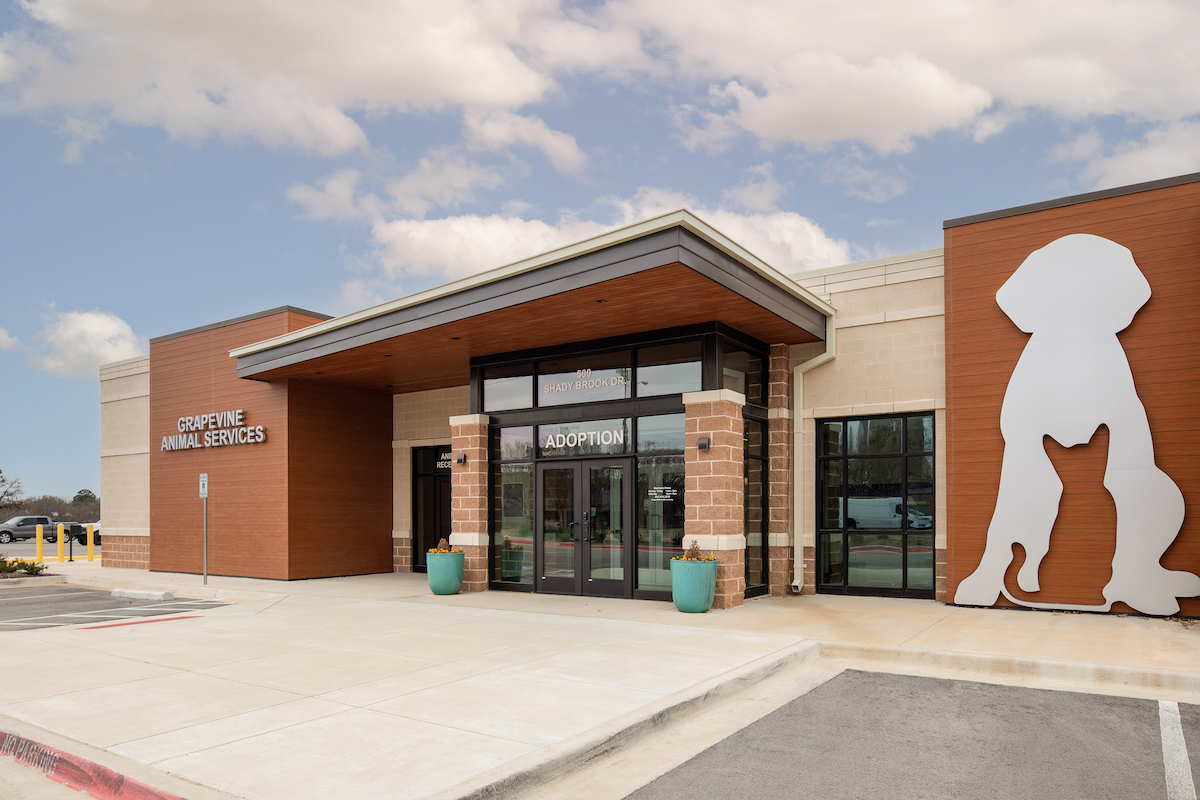
Quorum Architects designed the facility to optimize not only its welcoming exterior presentation, but also its interior functionality, introducing specialized areas such as indoor cat condos, play yards for dogs, and a get-to-know courtyard where potential pet owners can bond with their future companions. A heated and ventilated drive-thru sally port ensures secure and comfortable animal delivery and transfer.
Inside, dedicated zones were established for offices, laundry, medical services, recovery areas, grooming spaces, and isolation/quarantine areas – all with the goald of catering to the diverse needs of the animals under care and the shelter's operational efficiency.
DAYLIGHTING FOR ANIMAL AND STAFF WELL-BEING
Recognizing the pivotal role of daylight in promoting animal and staff well-being, Grapevine Animal Services pursued a design strategy centered on infusing its interior spaces with abundant natural light. To do so, Quorum Architects collaborated with NTX Building Products, the local Solatube International distributor, to integrate nine units of SolaMaster 750 DS into the facility.
Solatube Tubular Daylighting Devices harvest daylight at the rooftop, transfer it down a highly reflective tube, and distribute it evenly into an interior space through a diffuser at the ceiling — on both sunny and cloudy days — without adding heat or cold into the interior space.
Unlike traditional skylights, Solatube TDDs are designed to be reconfigurable over time and to reduce glare and inconsistent light patterns while screening UV and infrared wavelengths that can fade finishes and overheat interiors.
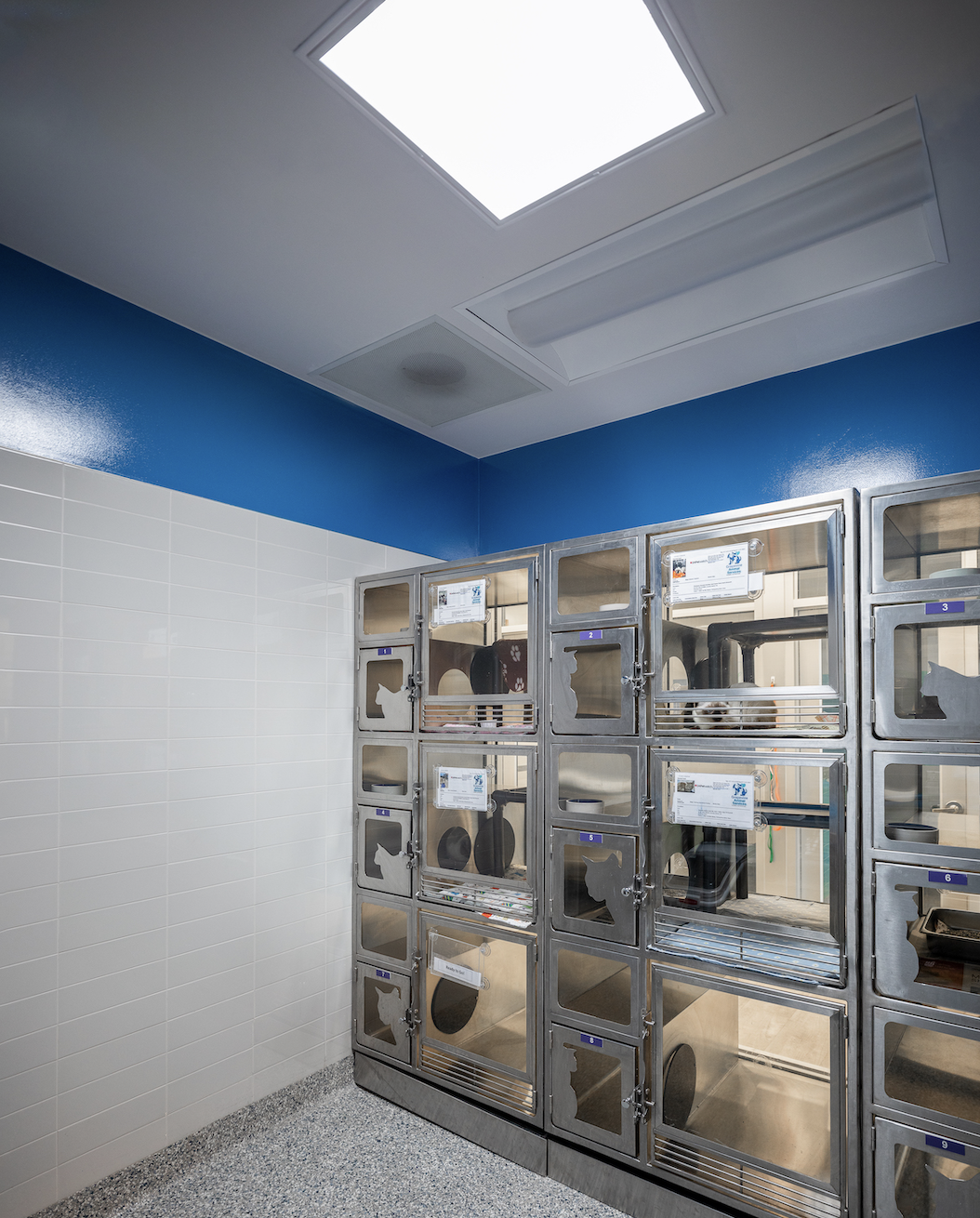
Natural light plays a vital role both in enhancing the overall well-being of shelter animals and in creating a more favorable environment for successful adoptions. (See Heemstra, E.M. [2013], “Shedding a light on animal shelters: the use of light and its effect on the adoption process,” University of Twente.)
Daylight, when used as an interior source of lighting, has been shown to reinforce circadian rhythms, benefiting both the animals and the staff. It also boosts animals' mood by increasing serotonin levels thus reducing stress and anxiety commonly observed in shelter animals.
Reducing stress levels is pivotal as it enables animals to showcase their genuine personalities and engage more effectively with prospective adopters. Natural daylight has an inherent ability to enhance an animal's appeal by highlighting the coat's sheen, the sparkle in their eyes and an overall vibrant and healthy appearance.
The culmination of these benefits, coupled with the creation of a welcoming ambiance and a bright, inviting atmosphere, encourages potential adopters to engage more extensively with the animals, ultimately resulting in higher adoption rates.
SHELTER MANAGER CITES POSITIVE IMPACT OF DAYLIGHTING
"Prioritizing natural daylight with Solatube Tubular Daylighting Devices has significantly enhanced our new shelter and adoption center,” said Kristina Valentine, CAWA, Animal Services Manager, Grapevine Animal Services Shelter and Adoption Center. “The abundance of natural light has positively impacted our environment, reducing stress, improving moods, and fostering a healthier atmosphere for all. It's been transformative for our animals, staff and visitors alike."
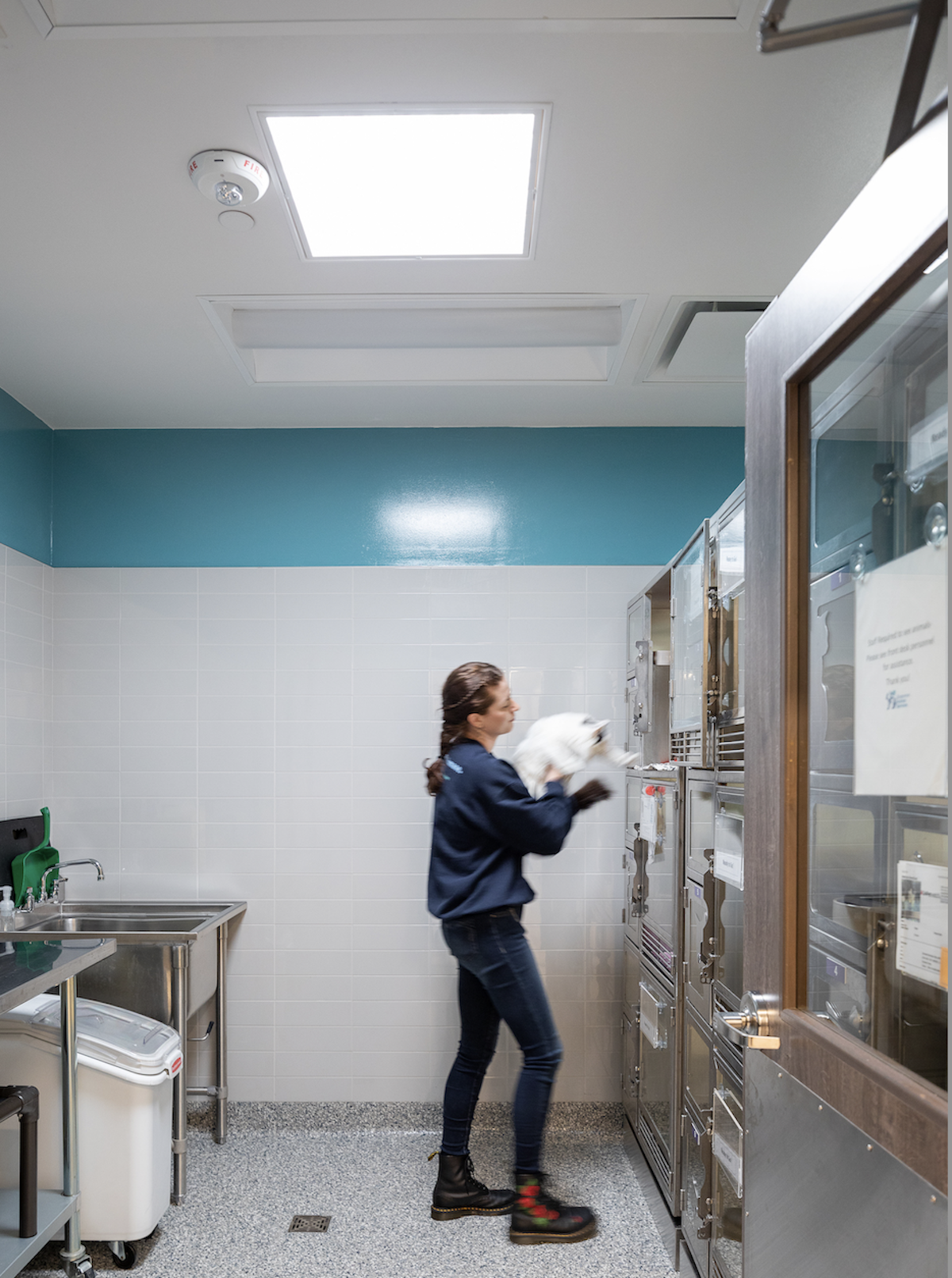
Related Stories
| Sep 9, 2013
Top 25 continuing education courses on BDCuniversity
An overview of the 25 most popular continuing education courses on BDCuniversity.com.
| Jul 23, 2013
Clearly Protective: Glazing for Life Safety at Seidman Cancer Center
Design team turns to fire-rated glazing for interior doors to give access to natural light, patient privacy and clear wayfinding throughout the building.
| May 17, 2013
5 things AEC pros need to know about low-e glass
Low-emissivity glasses are critical to making today’s buildings brighter, more energy-efficient, and more sustainable. Here are five tips to help AEC professionals understand the differences among low-e glasses and their impact on building performance.
| Apr 30, 2013
Tips for designing with fire rated glass - AIA/CES course
Kate Steel of Steel Consulting Services offers tips and advice for choosing the correct code-compliant glazing product for every fire-rated application. This BD+C University class is worth 1.0 AIA LU/HSW.
| Apr 8, 2013
Oldcastle Architectural acquires Expocrete Concrete Products
Oldcastle® Architectural has acquired Expocrete Concrete Products Ltd., giving North America’s largest producer of concrete masonry and hardscape products an increased presence in the high-growth region of western Canada.
| Apr 8, 2013
Most daylight harvesting schemes fall short of performance goals, says study
Analysis of daylighting control systems in 20 office and public spaces shows that while the automatic daylighting harvesting schemes are helping to reduce lighting energy, most are not achieving optimal performance, according to a new study by the Energy Center of Wisconsin.
| Mar 20, 2013
Folding glass walls revitalize student center
Single-glazed storefronts in the student center at California’s West Valley College were replaced with aluminum-framed, thermally broken windows from NanaWall in a bronze finish that emulates the look of the original building.
| Feb 26, 2013
Proposed ASHRAE standard revisions would boost requirement for automatic lighting
Proposed changes to the ASHRAE/IES energy standard would require automatic lighting controls in more space types and shorten the times before lighting is automatically reduced or shut off.
| Feb 25, 2013
What end-users do (and don't) know about lighting technology (infographic)
The fifth annual SYLVANIA Socket Survey from OSRAM SYLVANIA finds that consumers are adjusting to new legislation and energy-efficient lighting options, with about half saying that they plan to switch to new lighting technologies.
| Feb 8, 2013
5 factors to consider when designing a shade system
Designing a shade system is more complex than picking out basic white venetian blinds. Here are five elements to consider when designing an interior shade system.


